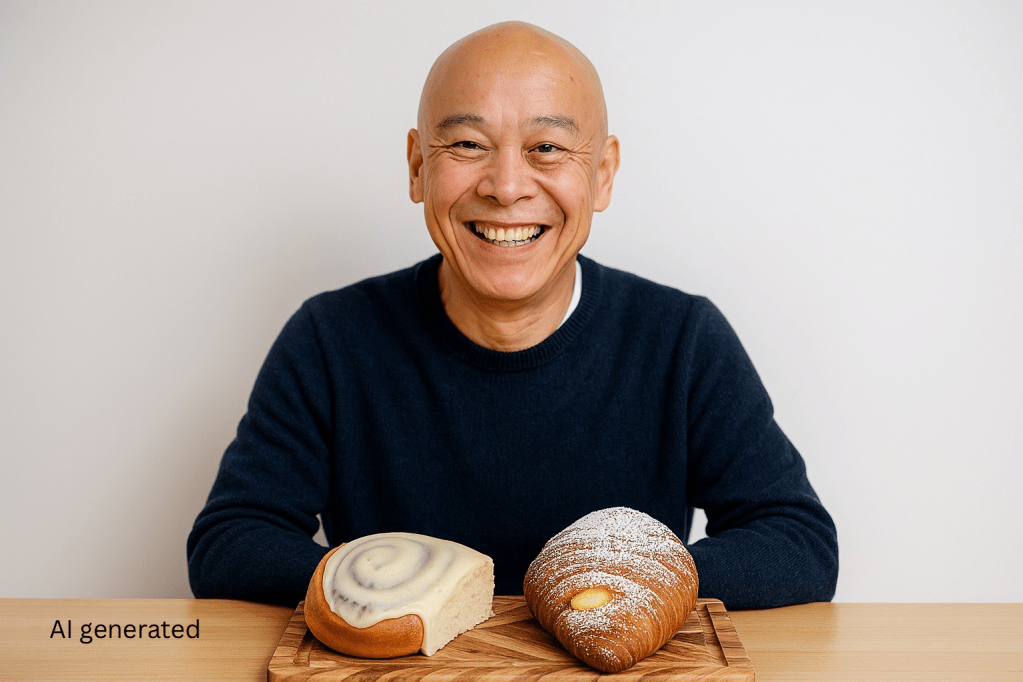
The other night, I started thinking about custard-filled pastry[i]. My mind went back to the custard-filled almond croissants from Dobinsons Canberra. My local bakery was in Belconnen. It was within walking distance of the flat I was renting. I’d buy a coffee[ii] there every Saturday morning before shopping for groceries. From time to time, I’d get a vanilla slice, or a custard-filled almond croissant or some other custard-filled pastry treat. Dobinsons Canberra had a terrific coffee card. Every fifth coffee was free, and every 20th coffee was free, along with a cake or pastry. I rarely “bought” a custard treat from Dobinsons Canberra.
Through the wonder of the Internet and search engines, I discovered a croissant bakery close to my home. It’s a hidden gem. It is Cannelle French Pastries. While the “street address” is Henley Beach Road, access is via Hayward Avenue, but the shop front isn’t easily apparent from the street. If you weren’t searching for it, you’d possibly miss it.
I won’t rewrite my review here. You can find it on Google Maps and Facebook.


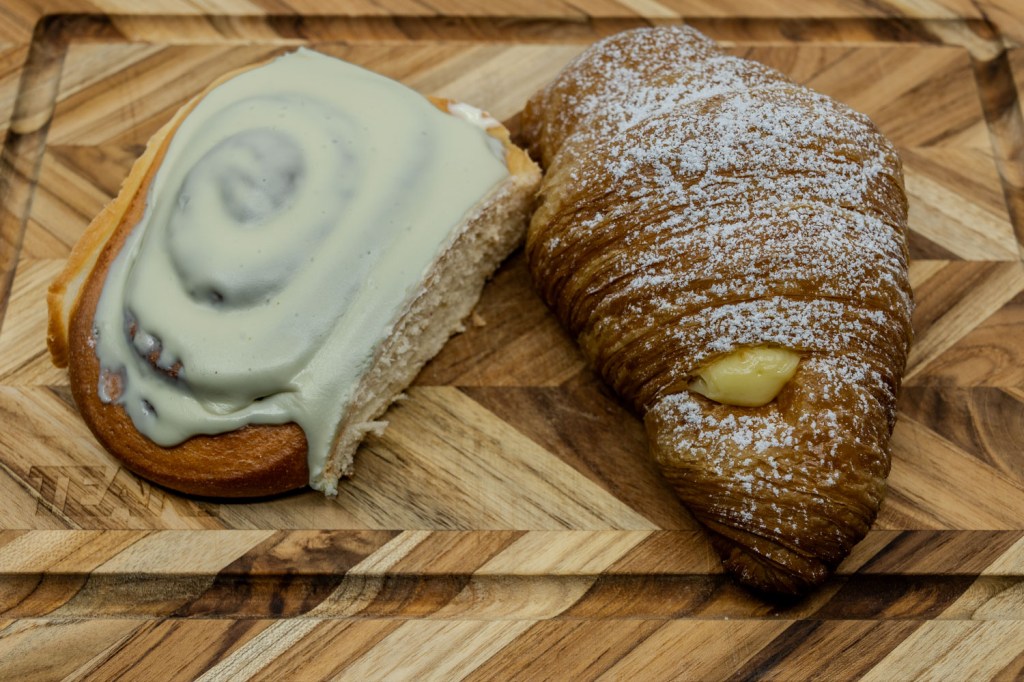
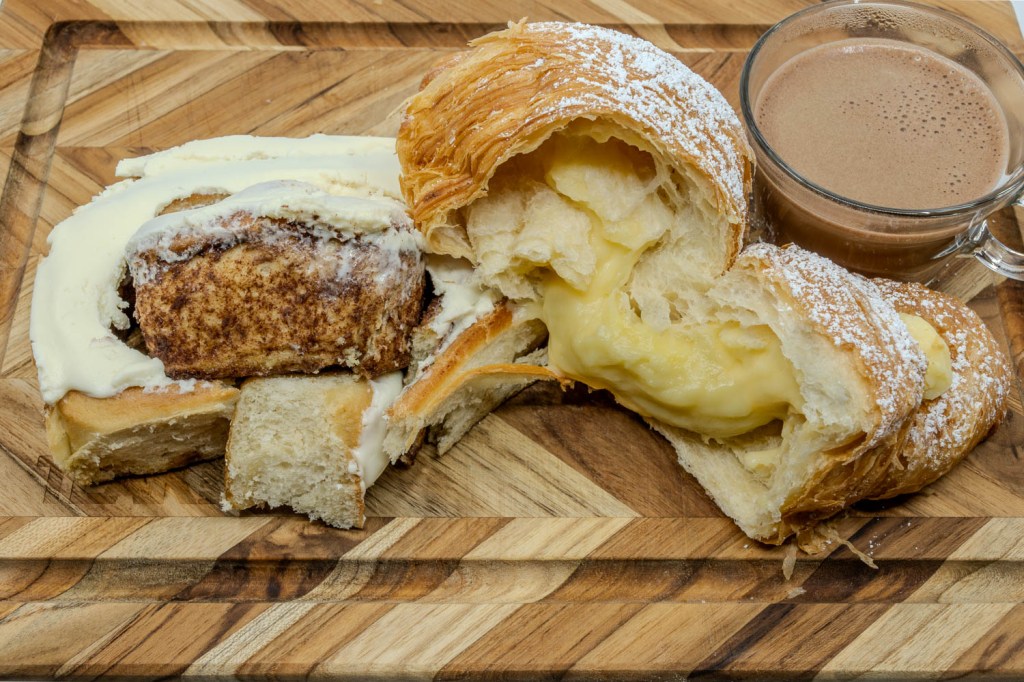
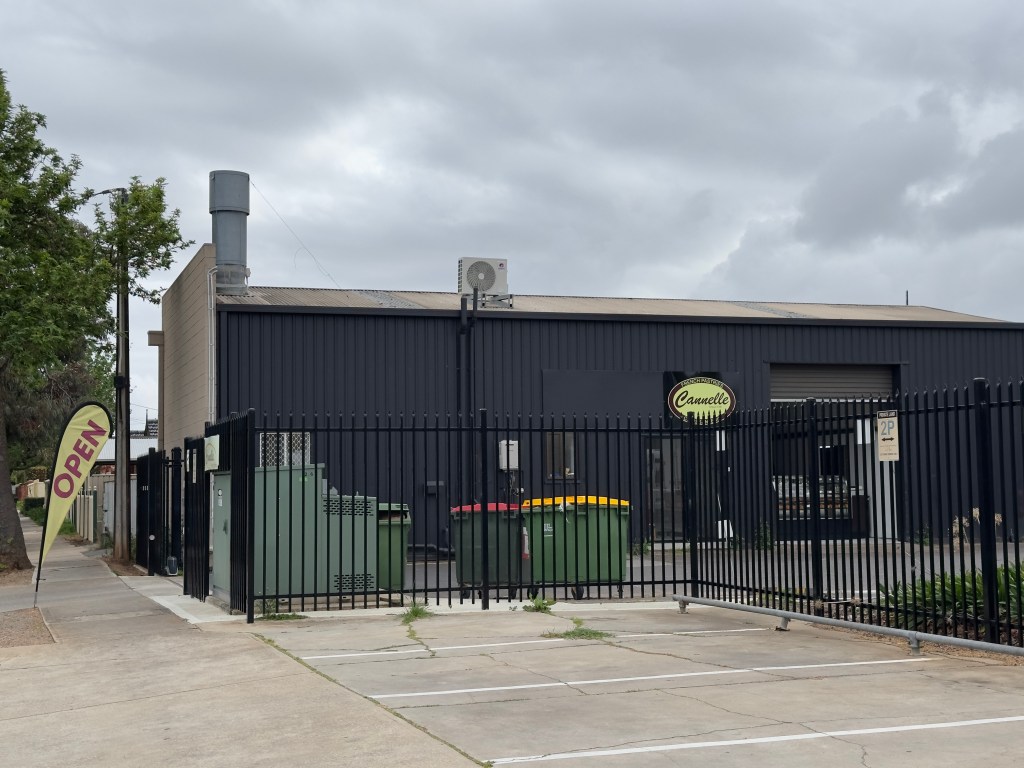
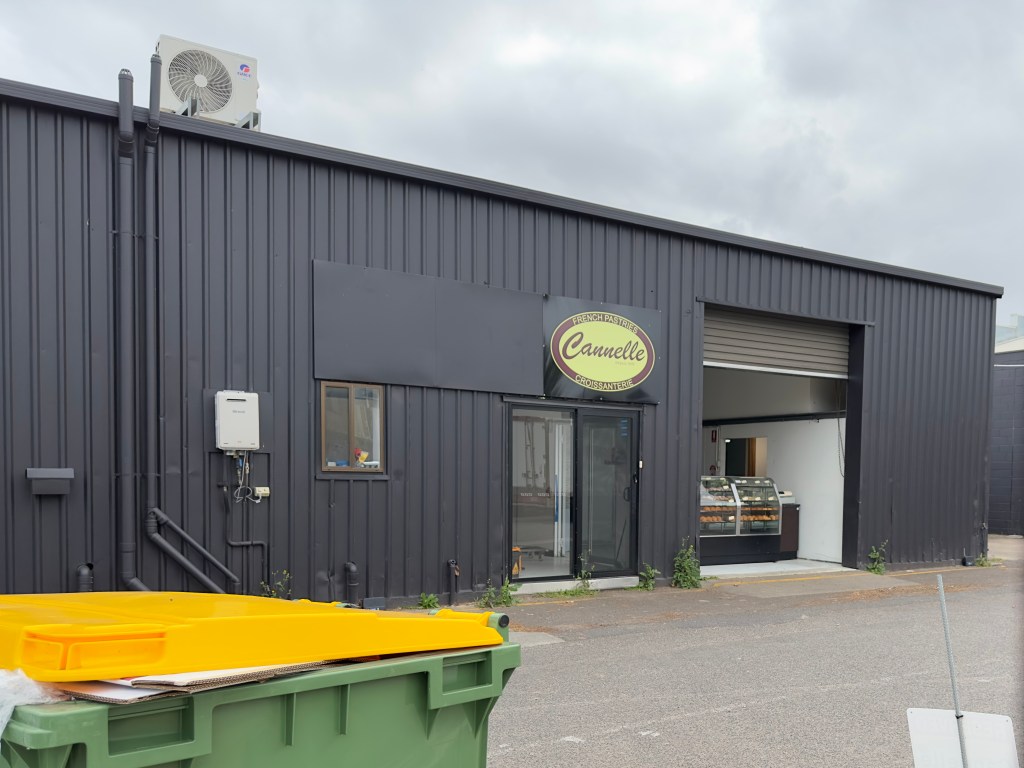

2025 National Rugby League grand final
Last week I referred to the NRL grand final premiership game. The Brisbane Broncos defeated the Melbourne Storm. The game was exciting to watch.
Here’s a headline bound to upset fans of soccer and Aussie rules.
Rugby League crowned Australia’s No.1 sport as GF smashes records
I went to work on Tuesday with a smile on my face and enjoyed the various conversations about how brilliant it was for the men’s and women’s Brisbane Broncos teams to be premiers in the NRL and NRLW, respectively.
Recipe — steak and three vegetables
Ingredients
- Grass-fed scotch fillet steak
- Salt
- Pepper
- Brussels sprouts
- “Baby” carrots
- Fennel
- Beef fat[iii]
- Grass-fed[iv] butter
- Pure pouring cream
- Cream cheese
- Dijon mustard
- Blue vein cheese
Equipment
- Precision cooker
- Water bath
- Barbecue grill
- Gas torch
- Small saucier pan
Instructions
Steak
- Dry-brine the steak.
- Cook the steak sous vide for 3 hours at 57 °C.
- Sear the steak with a gas torch over the barbecue grill.
Brussels sprouts, carrots, and fennel
- Cut each Brussels sprout in half (longitudinally).
- Parboil the Brussels sprouts, carrots, and fennel in salted water.
- Remove the excess water.
- Shallow fry in beef fat on the barbecue grill.
Sauce
- In a small saucier pan, add butter, pure pouring cream, cream cheese, blue vein cheese, and Dijon mustard.
- Turn on the heat to low and begin stirring while the ingredients combine to form a thick, rich sauce.
- Add the cooking liquor from the steak’s vacuum bag and stir through the sauce.
- Further season the sauce with freshly cracked black peppercorns.
Serving the meal
- Pour the sauce over the dinner plate.
- Slice the steak and place it on the dinner plate.
- Place the vegetables next to the steak.
- Season with flaky salt and freshly cracked peppercorns.
Thoughts on the meal
I don’t think I’ll ever tire of steak. The only thing that would turn me off is Alpha-gal syndrome[v]. To avoid that, I refuse to go bushwalking.
Photographs
This is a gallery. Select one and scroll through the rest.


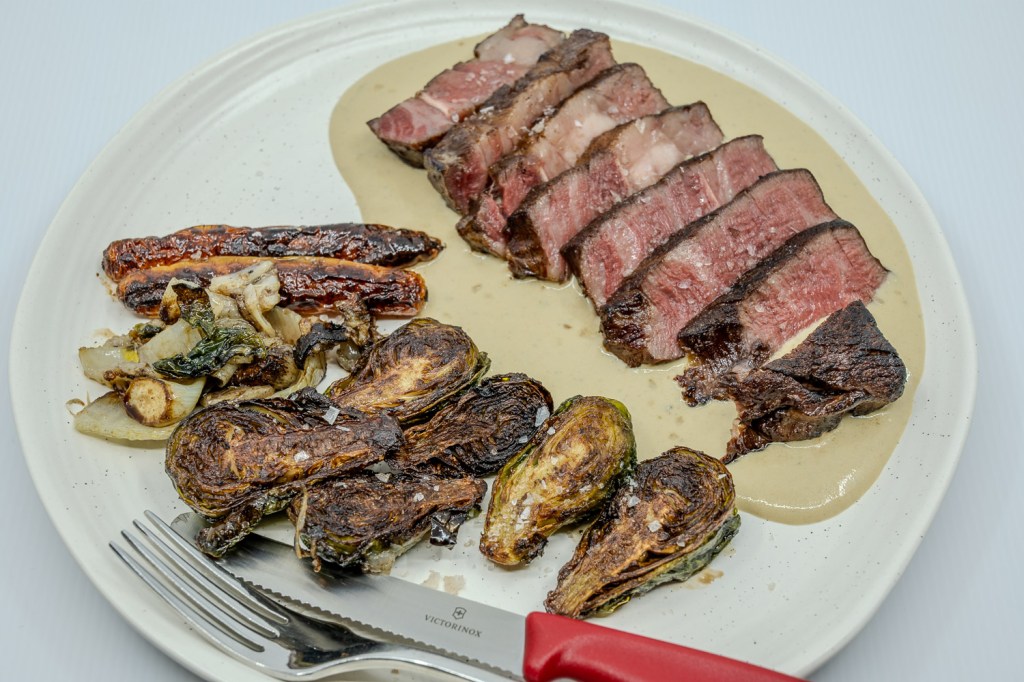
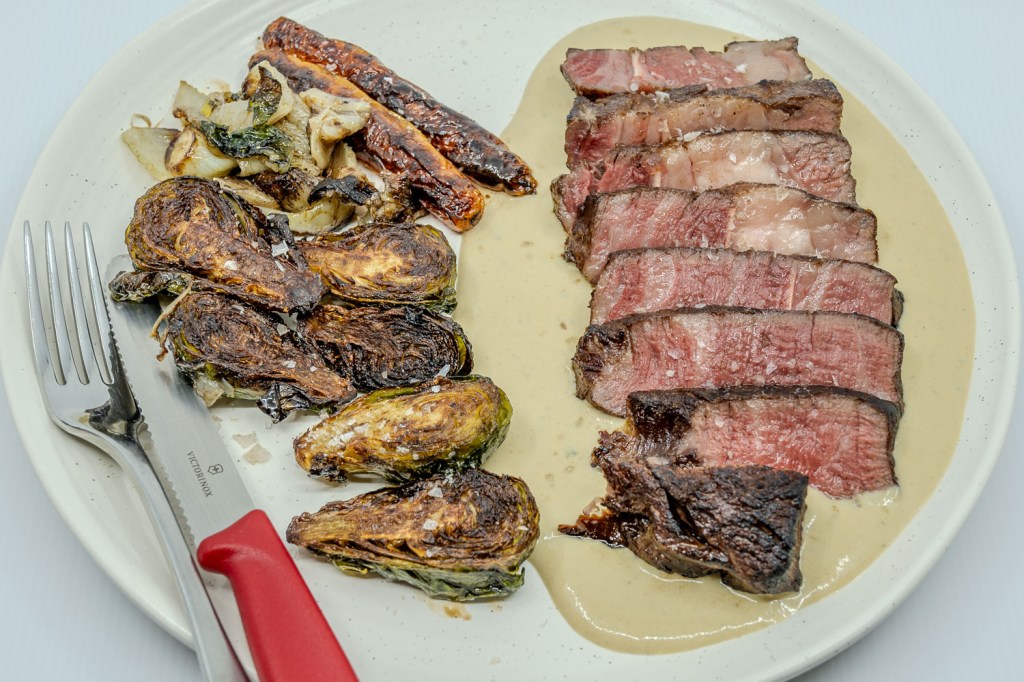

More custard
I visited “The Village Baker” earlier today to buy a sourdough baguette. I also bought a custard-filled Berliner[vi].
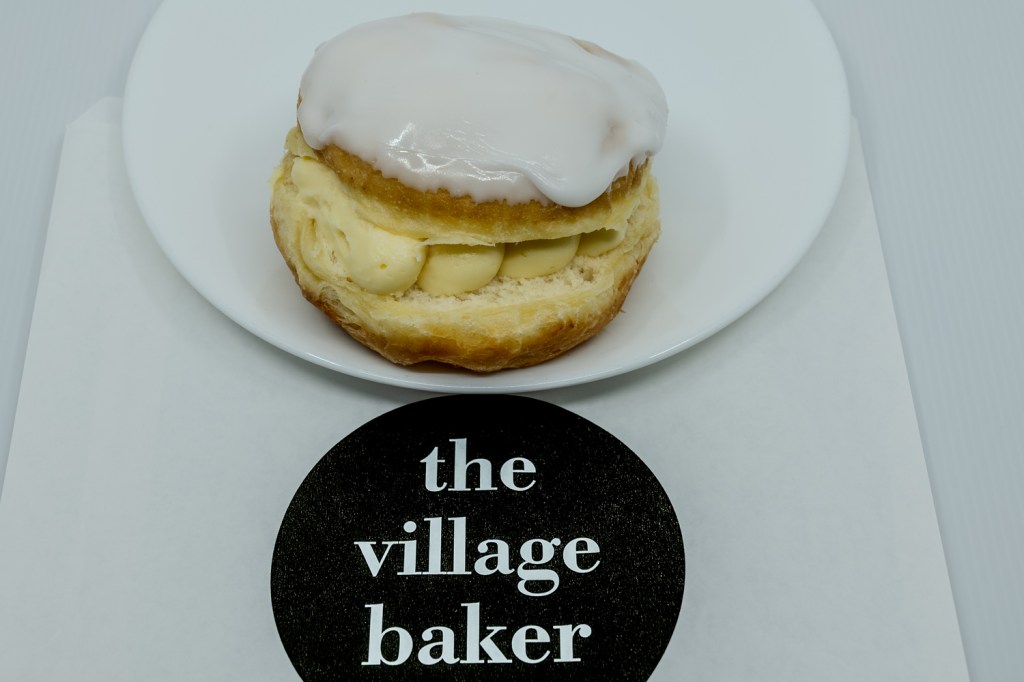
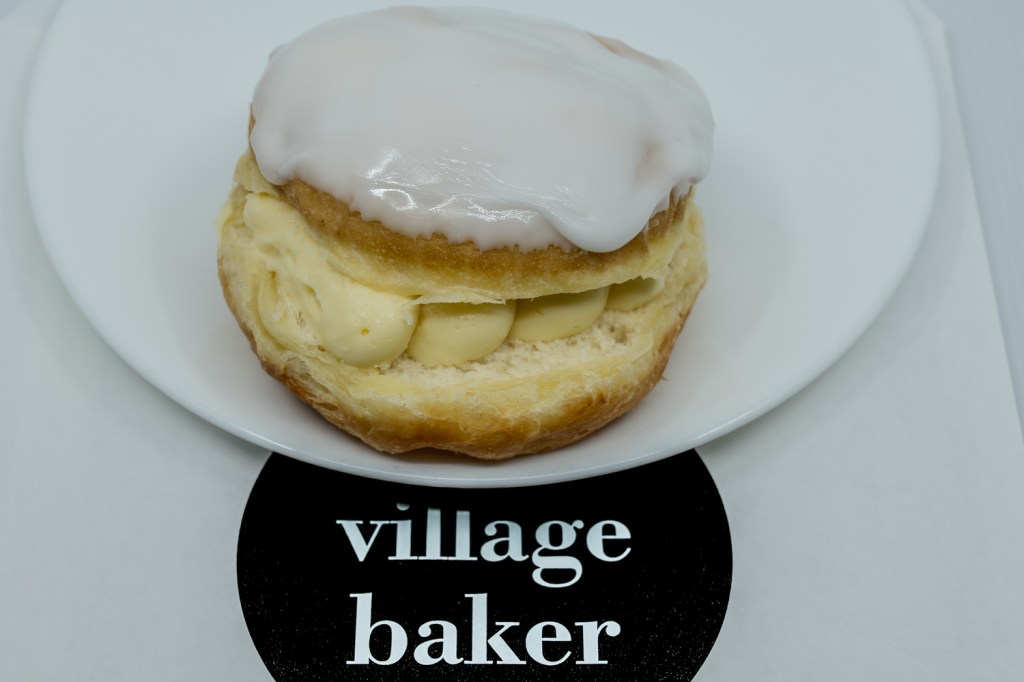
[i] I probably think about custard-filled pastries once a day.
[ii] The coffee was not always the best and certainly the coffee in Adelaide is superior to any coffee I’ve consumed in Canberra.
[iii] I use beef fat which is left over from slow cooking beef cuts like ribs, brisket, and chuck steak.
[iv] From New Zealand.
[v] Also known as mammalian meat allergy. It’s associated with the bite of some ticks.
[vi] A Berliner is a traditional German doughnut without a hole, made from sweet yeast dough, deep-fried, and typically filled with jam or custard. It’s usually dusted with powdered sugar or glazed with icing. In South Australia, Berliners were renamed Kitchener Buns during WWI due to anti-German sentiment. These are slashed on one side and filled with jam and whipped cream.

